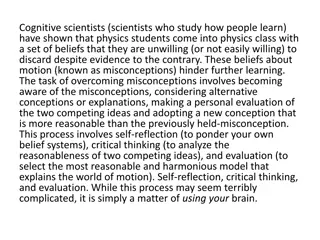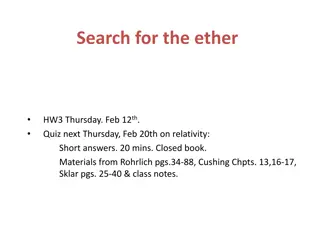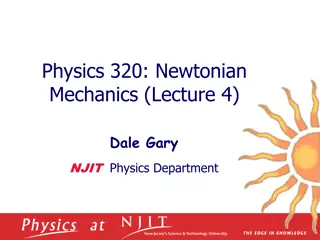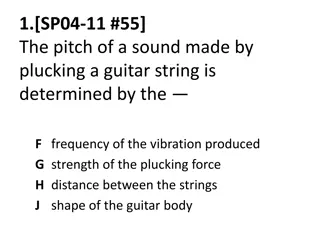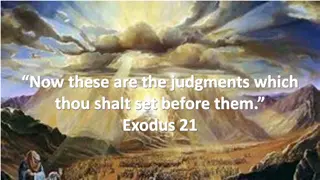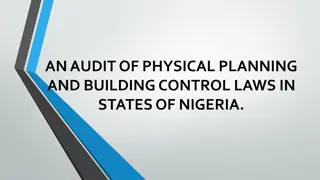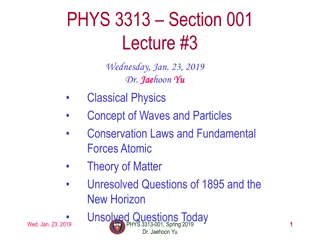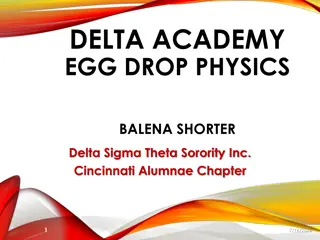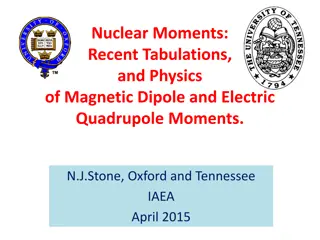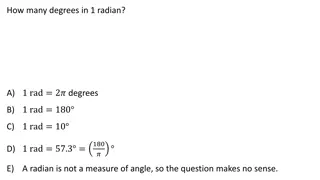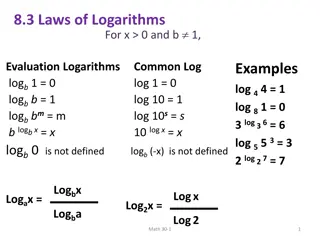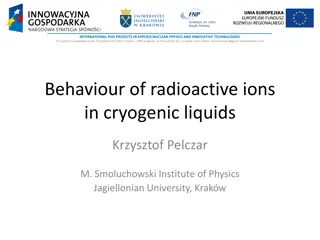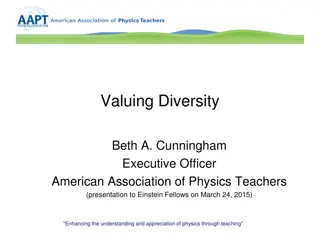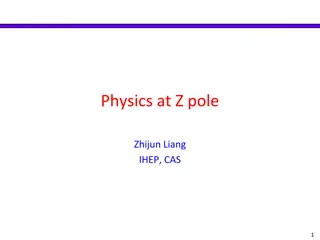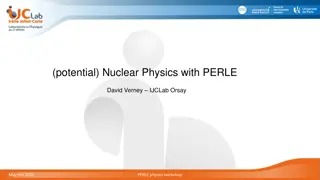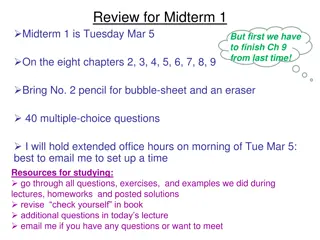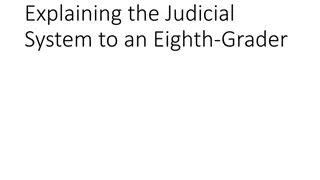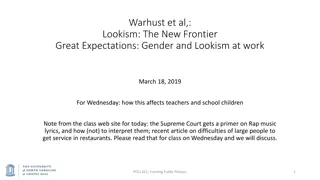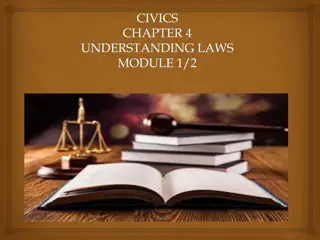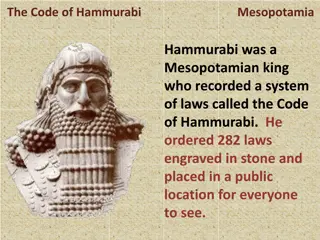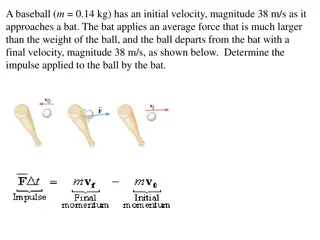Physics Concepts and Laws Explained
Quantities and units in physics equations, calculation of vector components, laws of motion, conservation of energy, conservation of momentum, impulse, elastic and inelastic collisions, gravitational potential energy, projectile motion, satellite motion, special relativity postulates, time dilation principles are all covered in this detailed content.
Download Presentation

Please find below an Image/Link to download the presentation.
The content on the website is provided AS IS for your information and personal use only. It may not be sold, licensed, or shared on other websites without obtaining consent from the author. Download presentation by click this link. If you encounter any issues during the download, it is possible that the publisher has removed the file from their server.
E N D
Presentation Transcript
Write down the quantities and units for the equations v = u + at s = ut + 1/2at2 v2 = u2 + 2as How do you calculate the horizontal and vertical components of a vector ? 1 2 What do we get if we calculate the gradient or area of a velocity time graph? State Newton s First, Second and Third Laws of Motion 3 4 How do you work out the component of weight acting down a slope? What do we mean by the phrase Conservation of Energy? 6 5 What is the law of conservation of momentum What is meant by the terms elastic and inelastic collisions ? 7 8 What are three ways to find impulse? Explain the equation Ft = mv - mu 9 10
s is displacement (m) u is initial velocity (ms-1) v is final velocity (ms-1) a is acceleration (ms-2) t is time (s) Vh = V cos Vv = V sin NI If the forces on an object are balanced the objects velocity remains constant. NII If there is an unbalanced force then the object accelerates. NIII For every action force there is an equal size but opposite direction force. Gradient calculates the acceleration. Area calculates the displacement. Energy is not created or destroyed it changes from one form to another Component of weight down slope = mg sin In an elastic collision both momentum and energy are conserved. In an inelastic collision only momentum is conserved In the absence of external forces the total momentum before a collision equals the total momentum after a collision. m1u1 + m2u2 = m1v1 + m2v2 Average force x time or Area under a force time graph or Change of momentum Ft is the impulse mv mu is the change in momentum
Recognise the formulae for work done, kinetic energy, gravitational potential energy and power Describe why projectiles follow a curved path 11 12 Describe & explain the motion of a satellite. Newton s law of gravitation. 14 13 State the second basic postulate of Special Relativity. State the first basic postulate of Special Relativity. 16 15 State the formula for Time Dilation Give one example showing Time Dilation 18 17 What (simply put) is Time Dilation? Give a second example showing Time Dilation 20 19
Ew = Fd They have a constant horizontal velocity (ignoring air resistance) and a constant vertical acceleration due to the force of gravity (weight). Ek = mv2 Ep = mgh P = E/t Satellites are in free fall around a planet or star. They have a constant horizontal velocity and a constant vertical acceleration. Two observers moving at constant speed observe the SAME laws of Physics. The speed of light (in a vacuum) is the same for all observers. Fast moving cosmic muons reach the Earth s surface when, without Time Dilation, they would decay in the upper atmosphere. ? ? = 1 ?2 ?2 Clocks on satellites e.g. GPS, run slow. Systems must take this into account if they wish to calculate an accurate position. Moving clocks appear to run slow (to an outside observer).
State the formula for Length Contraction What (simply put) is Length Contraction? 21 22 Which Greek letter represents the Lorentz Factor? What is the Lorentz Factor? 24 23 What is the Time Dilation formula in terms of the Lorentz Factor? What is Proper Time, t ? 26 25 What is Proper Length, l ? What is Dilated Time, t ? 28 27 What is the Doppler Effect? What is Dilated Length, l ? 30 29
Moving objects appear shortened (to an outside observer). ? = ? 1 ?2 ?2 1 Gamma 1 ?2 ?2 The time measured in a frame in which the clock is at rest relative to the event e.g. the clock actually on the spaceship. Time is always shorter in this frame. . t = t The length measured in a frame in which the measurer is at rest relative to the event e.g. the length actually measured on the spaceship. Length is always longer in this frame. The time measured in a frame where you are observing the event from the outside e.g. on the planet watching the spaceship fly past. Time passes faster here. The moving clock seems to be running slow. The length measured in a frame where you are observing the event from the outside e.g. on the planet watching the spaceship fly past. The moving object length is shorter. Observed change in frequency of a wave when the source is moving relative to the observer.
Doppler Effect - if the source is approaching, do you add or subtract the source velocity in the divisor? Why? Formula for the Doppler Effect for sound 31 32 Howdo you calculate a Z value? Give two methods What is a Z value? 34 33 What is Redshift? What is Blueshift? 36 35 Formula for Hubble s Law How is the age of the universe estimated from Hubble s Law? 38 37 What do measurements of galaxy velocities and their distance from us tell us about the universe? How is the mass of a galaxy estimated? 40 39
Subtract the source velocity. It makes the perceived frequency higher. ? f0 = fs V = Speed of sound Vs = Speed of source f0 = Observed frequency fs = Source frequency ? ?? A measure of the red- shift of an object, given as a fraction of the speed of light. ? ? ???? = ? Z = ? Waves coming from a source moving towards an observer are measured to have a higher frequency (bluer) than the source Waves coming from a source moving away from an observer are measured to have a lower frequency (redder) than the source V = H0d ? ? = 1 H0= age of the universe V = Recessional velocity of a galaxy Ho= Hubble s constant d = distance to the galaxy The universe is expanding By measuring the orbital speed of stars within the galaxy
Give evidence for the existence of dark matter Give evidence for the existence of dark energy 41 42 Describe the relationships between the temperature of a stellar object and the wavelength and irradiance of radiation emitted. Give evidence to support the Big Bang Theory 44 43 46 45 48 47 50 49
Stars in galaxies are orbitting faster than predicted. The rate of expansion of the universe is increasing. Cosmic Microwave Background Radiation . The abundance of hydrogen and helium. The darkness of the sky (Olber s paradox). Large number of galaxies showing redshift. Peak wavelength is shorter for hotter objects. Hot objects emit more radiation per unit surface area per unit time. .










